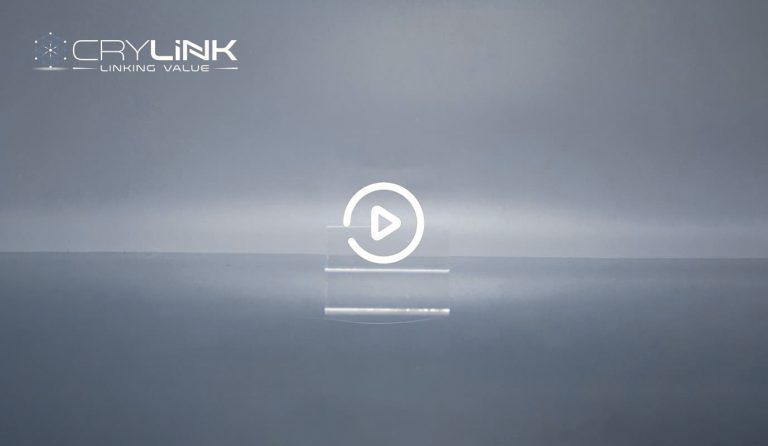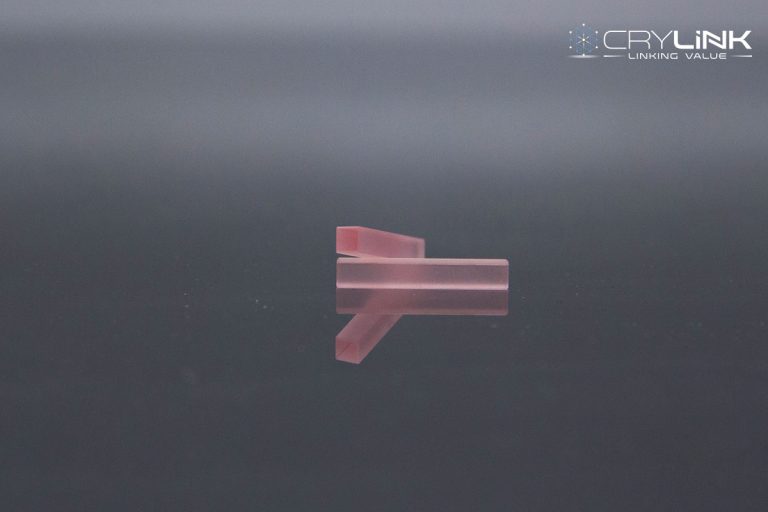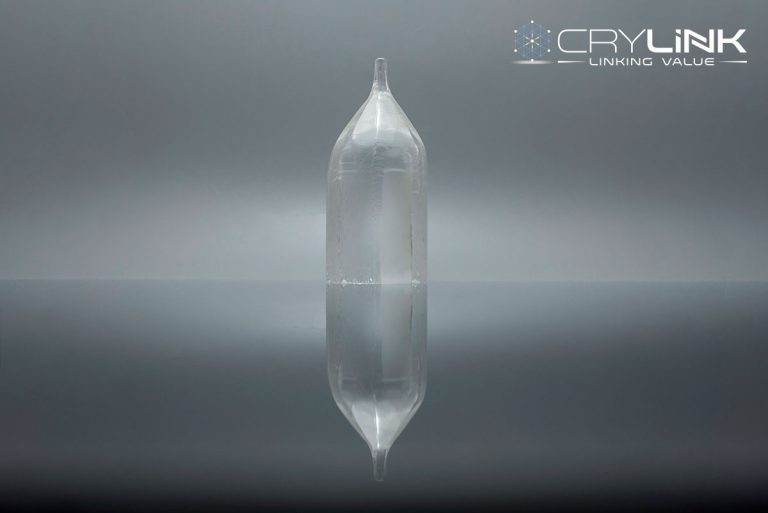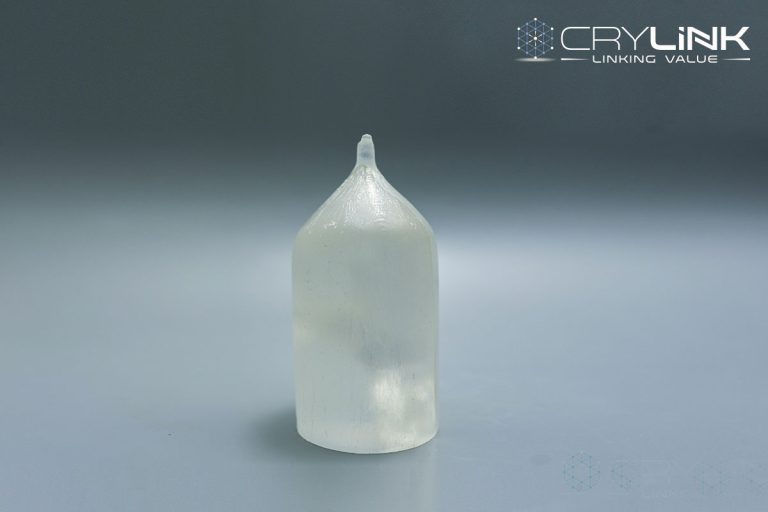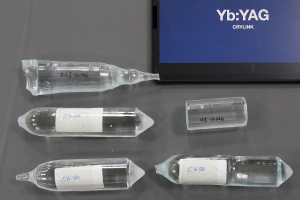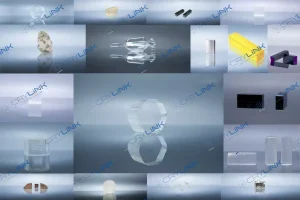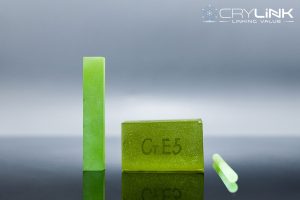Yb: KGW
Yb3+: KGd(WO4)2 (Yb:KGW) is one of the most promising laser active materials. Yb:KGW crystal is expected to replace Nd:YAG crystal and Yb:YAG crystal in high power diode pumped laser system. Yb:KGW also has great potential for high power, short pulse time femtosecond lasers and their wide application.
Yb3+:KGW has large absorption coefficient, low quantum defect, high absorption and emission cross section
The simple two-level electronic structure of the Yb ion avoids undesired loss processes such as upconversion, excited state absorption, and concentration quenching. Compared to the commonly used Nd:YAG crystal, Yb:KGW crystal has a much larger absorption bandwidth, 3 or 4 times longer emission lifetime in similar hosts with enhanced storage capacity, lower quantum defect and is more suitable for diode pumping than the traditional Nd-doped systems. The smaller Stokes shift reduces heating and increases the laser efficiency. In comparison with other Yb doped laser crystals such as Yb:YAG and Yb:YCOB crystals, Yb:KGW has a much higher (13-17 times) cross-section of absorption, lower quantum defect (~4%), a cross-section of emission that is 9 times higher than Yb: YCOB, and an emission band that is broader than Yb:YAG, a high nonlinear coefficient of refraction, and the highest slope efficiency (87%).
- The width of absorption line is wide, and the pump wavelength of LD pump source with phase matching can be obtained without strict temperature control;
- The quantum defect is low, and the pump wavelength is very close to the laser output wavelength, which will lead to a large intrinsic laser slope efficiency, and the quantum efficiency is up to about 90% theoretically;
- Because the pumped energy level is close to the upper laser level, the thermal load in the material without radiation relaxation is low, which is only one third of that of the same laser material doped with neodymium;
- No excitation state absorption and upconversion, high light conversion efficiency;
- Long fluorescence life, more than three times that of the same neodymium-doped laser material, is conducive to energy storage;
Femtosecond Yb:KGW laser applicated in nonlinear microscopy
Yb-ion based femtosecond lasers operating around 1000 nm are particularly suited for biological imaging with high-resolution multiphoton excitation fluorescence, and third and second harmonic generation microscopy. They are a good alternative to commonly used Ti:sapphire lasers emitting in the 800 nm wavelength regime. Longer excitation wavelengths are desirable due to lower scattering and higher penetration depths in the biological tissue. In addition, the autofluorescence and bleaching are also largely reduced. Furthermore, the generated third and second harmonics fall into the visible range (rather than UV), resulting in higher throughput and a simpler detection scheme. On the other hand, wavelengths in the range of a Cr:forsterite laser at around 1200-1300 nm suffer from significant water absorption. At higher excitation powers that may cause photo-damage of biological tissues. Moreover, direct diode pumping of Yb-ion doped laser gain media considerably reduces the cost of a system in comparison to Ti:sapphire and Cr:forsterite lasers, which are usually pumped by expensive solid-state or fiber lasers.
Yb:KGW Oscillators
The extended cavity oscillators offer straightforward approach towards the scaling of the peak power by lowering the repetition rate (typically below 30-40 MHz).Nonetheless, the increased influence of the nonlinear effects usually results in a trade-off between the pulse duration and the peak power (or pulse energy). So far, pulses with 2.3 MW peak power (1 μJ energy) have been delivered from a 10 MHz Yb:KYW bulk oscillator. The pulse duration, however, was limited to 430 fs. Similarly, pulses with 1.3 MW peak power and 323 fs duration were generated from a 23.7 MHz Yb:CALGO bulk oscillator. On the other hand, short pulses with 145 fs duration but at a reduced peak power of 0.16 MW (24 nJ energy) were demonstrated directly from a 27 MHz Yb:CALGO bulk oscillator. Recently we demonstrated 67 fs pulses with 3 W of average output power at a repetition rate of 77 MHz from an Yb:KGW bulk oscillator.
Regenerative Amplifiers
Watt-level high-repetition-rate Yb:KGW regenerative amplifiers use acousto-optic switching. The obtained pulse energies up to now are on the order of tens of microjoules.
| A diode-pumped high power extended cavity femtosecond Yb KGW laser: from development to applications in nonlinear microscopy |
| Megawatt peak power level sub-100 fs Yb KGW oscillators |
| 100-fs diode-pumped Yb KGW mode-locked laser |
| CW laser performance of Yb and Er,Yb doped tungstates |
| Mode-locked Yb KGW laser longitudinally pumped by polarization-coupled diode bars |
If you can’t find the Literature you want, Contact us to get the PDF Get the Literature
| Pulsed laser operation of Yb-doped KY(WO4)2 and KGd(WO4)2 |
| Powerful 67 fs Kerr-lens mode-locked prismless Yb:KGW oscillator |
| Diode-pumped gigahertz femtosecond Yb:KGW laser with a peak power of 3.9 kW |
| Efficient Yb KGW lasers end-pumped by high-power diode bars |
| Diode-pumped femtosecond Yb:KGd(WO4)2 laser with 1.1-W average power |
| Efficient frequency doubling of a femtosecond Yb KGW laser in a BiB3O6 crystal |
| Thermal lensing measurements in diode-pumped Yb-doped GdCOB, YCOB, YSO, YAG and KGW |
| A diode-pumped continuous-wave Yb:KGW laser with Ng-axis polarized output. |
| Laser performance and thermal lensing in high-power diode-pumped Yb:KGW with athermal orientation |
| Quantum-dot saturable absorber and Kerr-lens mode-locked Yb:KGW laser with >450 kW of peak power |
| Compact diode-pumped 1.1 kW Yb:YAG Innoslab femtosecond amplifier |
| Differential microscopy for fluorescence-detected nonlinear absorption linear anisotropy based on a staggered two-beam femtosecond Yb:KGW oscillator |
| Polarization-tunable Yb:KGW laser based on internal conical refraction |
| High-power, femtosecond, thermal-lens-shaped Yb:KGW oscillator |
| Development of diode-pumped high average power continuous-wave and ultrashort pulse Yb:KGW lasers for nonlinear microscopy |
| A gigahertz multimode-diode-pumped Yb:KGW enables a strong frequency comb offset beat signal |
| High power Yb:KGW and Yb:KYW thin disk laser operation |
| Orthogonally polarized dual-wavelength Yb:KGW laser induced by thermal lensing |
| High-power continuous-wave dual-wavelength operation of a diode-pumped Yb:KGW laser |
| Carrier envelope phase stabilization of a Yb:KGW laser amplifier |
| 240-fs pulses with 22-W average power from a mode-locked thin-disk Yb:KY(WO4)2 laser |
| Passive Q switching and self-frequency Raman conversion in a diode-pumped Yb:KGd(WO4)2 laser |
| Terahertz time-domain spectroscopy system based on femtosecond Yb:KGW laser |
| Thermal lensing in an end-pumped Yb:KGW slab laser with high power single emitter diodes |
| High-power, efficient, semiconductor saturable absorber mode-locked Yb:KGW bulk laser |
Parameter
| Chemical formula | potassium gadolinium tungastate |
| Crystal structure | monoclinic double tungstates |
| Density | 7.27 g/cm3 |
| Transmission range | 0.35-5.5 μm |
| Mohs hardness | 4 to 5 |
| Refractive indices at 1060 nm | ng = 2.037, np = 1.986, nm=2.033 |
| Thermal conductivity | Ka=2.6 W/mK, Kb=3.8 W/mK, Kc=3.4 W/mK |
| Thermal optical coefficient @1064 nm | dnp/dT=-15.7 * 10-6 K-1 |
| dnm/dT=-11.8 * 10-6 K-1 | |
| dng/dT=-17.3 * 10-6 K-1 | |
| Thermal expansion | αa=4X10-6 /°C |
| αb=3.6X10-6 /°C | |
| αc=8.5X10-6 /°C | |
| Melting temperature | 1075 °C |
| Absorbtion cross section | 1.2X10-19 cm2 |
| Stimulated emission cross section (E| |a) | 2.6X10-20 cm2 |
| Laser wavelength | 1023-1060 nm |
| Lasing threshold | 35 mW |
| Stark levels energy (in cm-1) of the 2F5/2 manifolds of Yb3+ @ 77 K | 10682, 10471, 10188 |
| Stark levels energy (in cm-1) of the 2F7/2 manifolds of Yb3+ @ 77K | 535, 385, 163, 0 |
| optical damage threshold, GW/cm2 | 20 |
| Absorption peak wavelength, lpump, [nm] | 981.2 |
| Absorption linewidth, Dlpump, [nm] | 3.7 |
| Peak absorption cross-section, spump, [cm2] | 1.2×10-19 |
| Peak absorption coefficient, [cm-1] | 26 |
| Emission wavelength, lse, [nm] | 1023 |
| Emission linewidth, Dlse, [nm] | 20 |
| Peak emission cross-section, sse, [cm2] | 2.8×10-20 |
| Quantum effect, lpump/lse, [nm] | 0.959 |
| Fluorescence lifetime, tem, [ms] | 0.6 |

